Related Research Articles

Mestizo is a term used for ethno-racial classification to refer to a person of mixed European and Indigenous American ancestry. In certain regions such as Latin America, it may also refer to people who are culturally European even though their ancestors are Native American or African. The term was used as an ethno-racial exonym for mixed-race castas that evolved during the Spanish Empire. It was a formal label for individuals in official documents, such as censuses, parish registers, Inquisition trials, and others. Priests and royal officials might have classified persons as mestizos, but individuals also used the term in self-identification.

Over a thousand indigenous languages are spoken by the Indigenous peoples of the Americas. These languages cannot all be demonstrated to be related to each other and are classified into a hundred or so language families, as well as a number of extinct languages that are unclassified because of a lack of data.
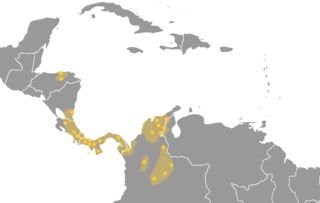
The Chibchan languages make up a language family indigenous to the Isthmo-Colombian Area, which extends from eastern Honduras to northern Colombia and includes populations of these countries as well as Nicaragua, Costa Rica, and Panama. The name is derived from the name of an extinct language called Chibcha or Muysccubun, once spoken by the people who lived on the Altiplano Cundiboyacense of which the city of Bogotá was the southern capital at the time of the Spanish Conquista. However, genetic and linguistic data now indicate that the original heart of Chibchan languages and Chibchan-speaking peoples might not have been in Colombia, but in the area of the Costa Rica-Panama border, where the greatest variety of Chibchan languages has been identified.

The Nahuas are a group of the indigenous people of Mexico, El Salvador, Guatemala, Honduras, and Nicaragua. They comprise the largest indigenous group in Mexico and second largest in El Salvador. The Mexica (Aztecs) were of Nahua ethnicity, and the Toltecs are often thought to have been as well, though in the pre-Columbian period Nahuas were subdivided into many groups that did not necessarily share a common identity.

The region known as Hispanic America and historically as Spanish America is all the Spanish-speaking countries of the Americas. In all of these countries, Spanish is the main language, sometimes sharing official status with one or more indigenous languages or English, and Roman Catholicism is the predominant religion.

Darién is a province in Panama whose capital city is La Palma. With an area of 11,896.5 km2 (4,593.3 sq mi), it is located at the eastern end of the country and bordered to the north by the province of Panamá and the region of Kuna Yala. To the south, it is bordered by the Pacific Ocean and Colombia. To the east, it borders Colombia; to the west, it borders the Pacific Ocean and the province of Panama.
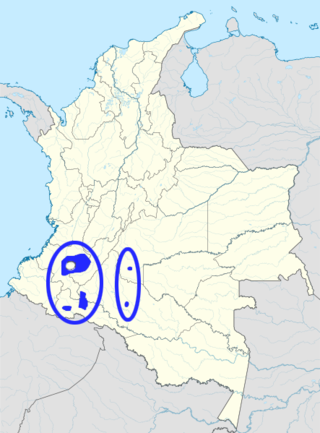
Páez is a language of Colombia, spoken by the Páez people. Crevels (2011) estimates 60,000 speakers out of an ethnic population of 140,000.
Cueva is a poorly attested and often misclassified extinct indigenous language of Panama. The Cueva people were exterminated between 1510 and 1535 during Spanish colonization. During the 17th and 18th centuries the Kuna repopulated the Cueva area.
Yuracaré is an endangered language isolate of central Bolivia in Cochabamba and Beni departments spoken by the Yuracaré people.
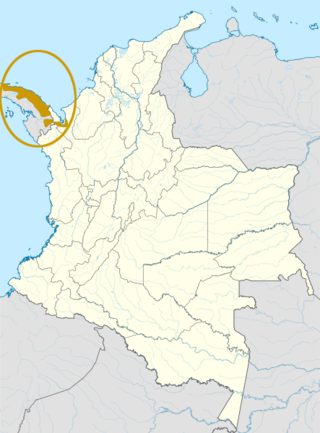
The Kuna language, spoken by the Kuna people of Panama and Colombia, belongs to the Chibchan language family.

The Indigenous peoples of South America or South American Indigenous peoples, are the pre-Columbian peoples of South America and their descendants. These peoples contrast with South Americans of European ancestry and those of African descent.

Murui Huitoto is an indigenous American Huitoto language of the Witotoan family. Murui is spoken by about 1,100 Murui people along the banks of the Putumayo, Cara-Paraná and Igara-Paraná rivers in Colombia. In Peru it is spoken in the North alongside the Ampiyacu and Napo rivers by some 1,000 people. Some Murui speakers live also outside their territories, for instance the vicinity of Leticia, Amazonas, Colombia.

The languages of South America can be divided into three broad groups:
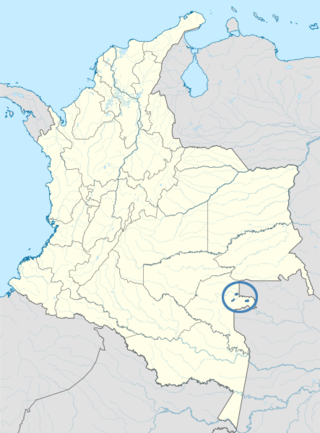
The Cacua language, also known as Kakua or Kakwa, is an indigenous language spoken by a few hundred people in Colombia and Brazil. There are many monolinguals, especially children. Apart from being close to or a dialect of Nukak, its classification is uncertain.
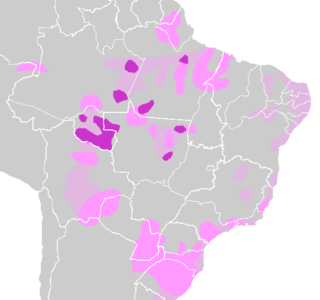
Amazonian languages is the term used to refer to the indigenous languages of "Greater Amazonia." This area is significantly larger than the Amazon and extends from the Atlantic coast all the way to the Andes, while its southern border is usually said to be the Paraná. The region is inhabited by societies that share many cultural traits but whose languages are characterized by great diversity. There are about 330 extant languages in Greater Amazonia, almost half of which have fewer than 500 speakers. Meanwhile, only Wayuu has greater than 100,000 speakers. Of the 330 total languages, about fifty are isolates, while the remaining ones belong to about 25 different families. Most of the posited families have few members. It is this distribution of many small and historically unrelated speech communities that makes Amazonia one of the most linguistically diverse regions in the world. The precise reasons for this unusual diversity have not yet been conclusively determined, but Amazonian languages seem to have had fewer than 10,000 native speakers even before the invasion of European colonists wrought havoc on the societies by which they were spoken. Despite the large-scale diversity, the long-term contact among many of the languages of Greater Amazonia has created similarities between many neighboring languages that are not genetically related. Most indigenous Amazonian people today are bilingual or even monolingual in English, Spanish, Portuguese, French or Dutch and many Amazonian languages are endangered as a result.
Pasto is a purported Barbacoan language that was spoken by Indigenous people of Pasto, Colombia and Carchi Province, Ecuador. It is now extinct.

The Andean civilizations were South American complex societies of many indigenous people. They stretched down the spine of the Andes for 4,000 km (2,500 mi) from southern Colombia, to Ecuador and Peru, including the deserts of coastal Peru, to north Chile and northwest Argentina. Archaeologists believe that Andean civilizations first developed on the narrow coastal plain of the Pacific Ocean. The Caral or Norte Chico civilization of coastal Peru is the oldest known civilization in the Americas, dating back to 3500 BCE. Andean civilization is one of the six "pristine" civilizations of the world, created independently and without influence by other civilizations.

Northern Emberá, also known as West Embera and Cholo, is the largest Embera language. It is spoken largely in Colombia, but is also the principal language of the Darién Gap in Panama.The Emberá language is divided into two branches: Northern and Southern. Two prominent Northern groups are Emberá Darien and Katio. The Katio language is spoken by 10,000 - 20,000 people, whose literacy rate is at 1%. The Darien Emberá language is spoken by 9,000-10,000 people.

The indigenous languages of South America are those whose origin dates back to the pre-Columbian era. The subcontinent has great linguistic diversity, but, as the number of speakers of indigenous languages is diminishing, it is estimated that it could become one of the least linguistically diverse regions of the planet.
References
- ↑ Cooke, Richard (2021). "Origins, Dispersal, and Survival of Indigenous Societies in the Central American Landbridge Zone of the Isthmo-Colombian Area". In McEwan, Colin; Hoopes, John (eds.). Pre-Columbian Central America, Colombia, and Ecuador: Toward an Integrated Approach. Washington, D.C.: Dumbarton Oaks. p. 49–83.